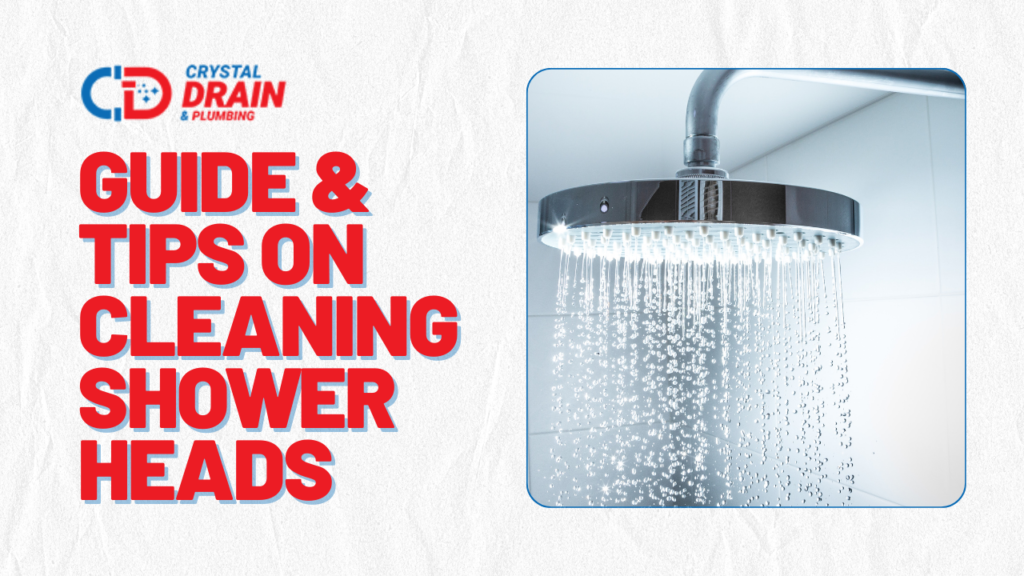- Last updated: January 15, 2025
Cleaning Shower Heads: Guide & Tips on What to Do

Maintaining a clean and fully functional shower head is crucial for a pleasant showering experience and the longevity of your bathroom fixtures. Over time, mineral deposits from hard water can clog your shower head and degrade its performance. This guide will take you through the steps to clean your shower head, ensuring optimal water flow and prolonged life.
Key Takeaways
- Preventive Maintenance: Regular cleaning can keep your shower head in optimal condition, preventing mineral build-up.
- Simple DIY Solutions: Most cleaning can be done with common household items like vinegar, a small brush, and basic tools.
- Signs of Clogging: If water flow is uneven or weaker than usual, mineral deposits may be obstructing the nozzles.
- Professional Help: For stubborn build-up, consider professional services to avoid damage and ensure thorough cleaning.

Step-by-Step Guide to Cleaning Your Shower Head
1. Gather Necessary Supplies
- Vinegar: Ideal for dissolving mineral build-up.
- Brush: A small brush or old toothbrush to scrub.
- Pliers or Wrench: To remove the shower head if necessary.
- Cleaning Rag: To protect the finish when using tools.
- Bucket or Large Bowl: For soaking the shower head.
2. Removing the Shower Head
- Carefully twist the shower head counterclockwise to remove it. If it’s tight, use pliers or a wrench with a cleaning rag around the connecting nut to loosen it gently.
3. Soaking the Shower Head
- Preparation: Heat white vinegar until it’s warm, not boiling.
- Soaking: Submerge the shower head fully in a container of warm vinegar. Ensure it’s completely submerged for effective mineral build-up dissolution.
- Duration: Leave the shower head to soak overnight for the best results.
4. Scrubbing and Rinsing
- After soaking, remove the shower head and rinse it under warm water.
- Use the brush to scrub away loosened mineral deposits. Focus on spray nozzles and any moving parts that might be clogged.
5. Reinstalling and Flushing
- Reattach the shower head to the piping.
- Run hot water through the shower for several minutes to flush out any residual vinegar and loosened debris.

Additional Tips and Maintenance
Regular Cleaning
Regular maintenance prevents significant build-up. A quick cleaning every few months can save you time and effort.
Water Softeners
If you live in an area with hard water, consider installing a water softener. This will reduce the mineral deposits that lead to clogged shower heads.
Check for Damage
While cleaning, inspect the shower head for signs of wear or damage. A damaged shower head may need replacing if cleaning doesn’t restore it to full functionality.
Advanced Cleaning and Troubleshooting
If vinegar doesn’t clear all blockages or if you’re dealing with stubborn deposits that have hardened over time, more advanced cleaning methods may be required. Mineral deposits, especially in areas with very hard water, can be particularly tough to remove.
In these cases, professional cleaning services may be necessary. Crystal Drain & Plumbing offers specialized cleaning services to handle mineral build-up and other stubborn issues with your bathroom fixtures.
Professional Services
For those tough jobs or if you prefer not to tackle the cleaning yourself, Crystal Drain & Plumbing provides professional plumbing services, including the cleaning and maintenance of bathroom fixtures. Our experts ensure that your shower heads, faucets, and other plumbing fixtures are operating efficiently. Check out our maintenance services for more information.
FAQs About Shower Head
Regular cleaning every 3 to 6 months is recommended, but if you notice a decrease in water flow, it’s time to clean sooner.
Clogging is often caused by mineral deposits from hard water, which build up inside the shower head, blocking water flow.
Yes, some people use baking soda or commercial cleaners specifically designed for mineral build-up. However, vinegar is the most common and effective solution.
If cleaning doesn’t restore water flow, and you notice cracks or visible damage to the head, it may be time to replace it.
Yes, you can soak the shower head in a plastic bag filled with vinegar and secure it with a rubber band, leaving it overnight.
Hard water contains high mineral content, which can build up on the shower head nozzles, reducing water flow and causing clogging.
Installing a water softener can significantly reduce mineral deposits in your plumbing system, keeping your shower head clean longer.
Conclusion
A clean shower head is key to maintaining a pleasant and functional showering experience. Regular maintenance, including using simple solutions like vinegar and performing quick checks for damage, can keep your shower in top condition. For tougher cases or time-saving, professional cleaning services from Crystal Drain & Plumbing are always available.
By following these straightforward cleaning steps, you’ll prolong the life of your shower fixtures and improve water flow, making your showering experience even more enjoyable.
